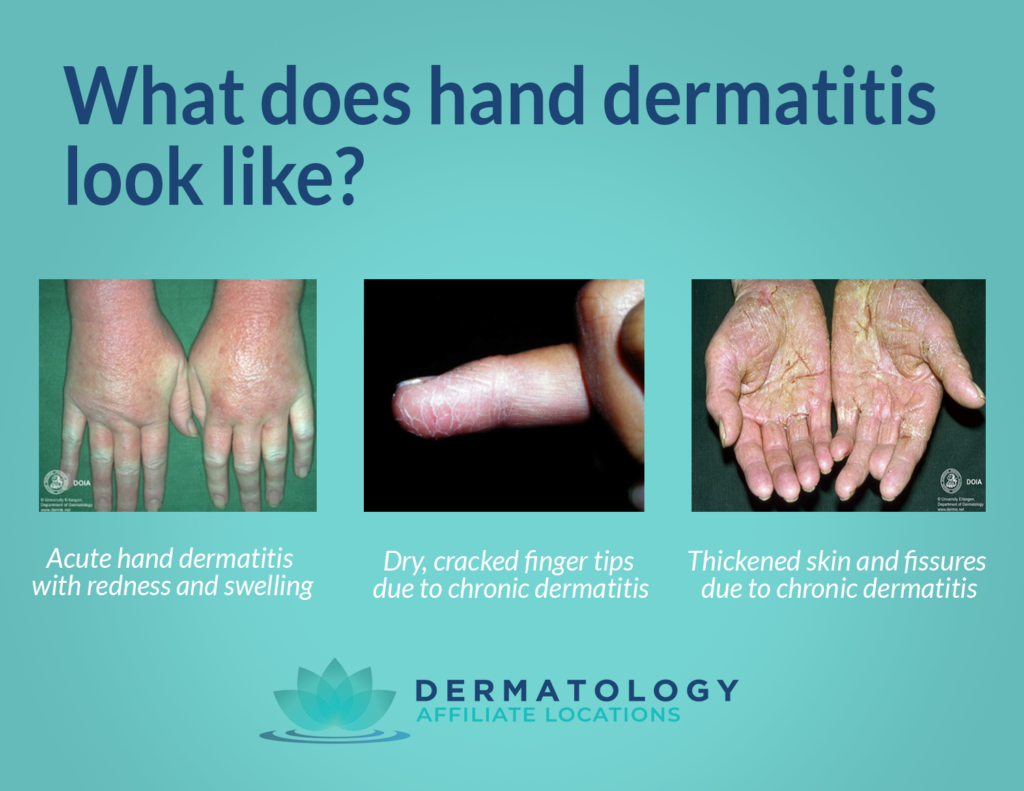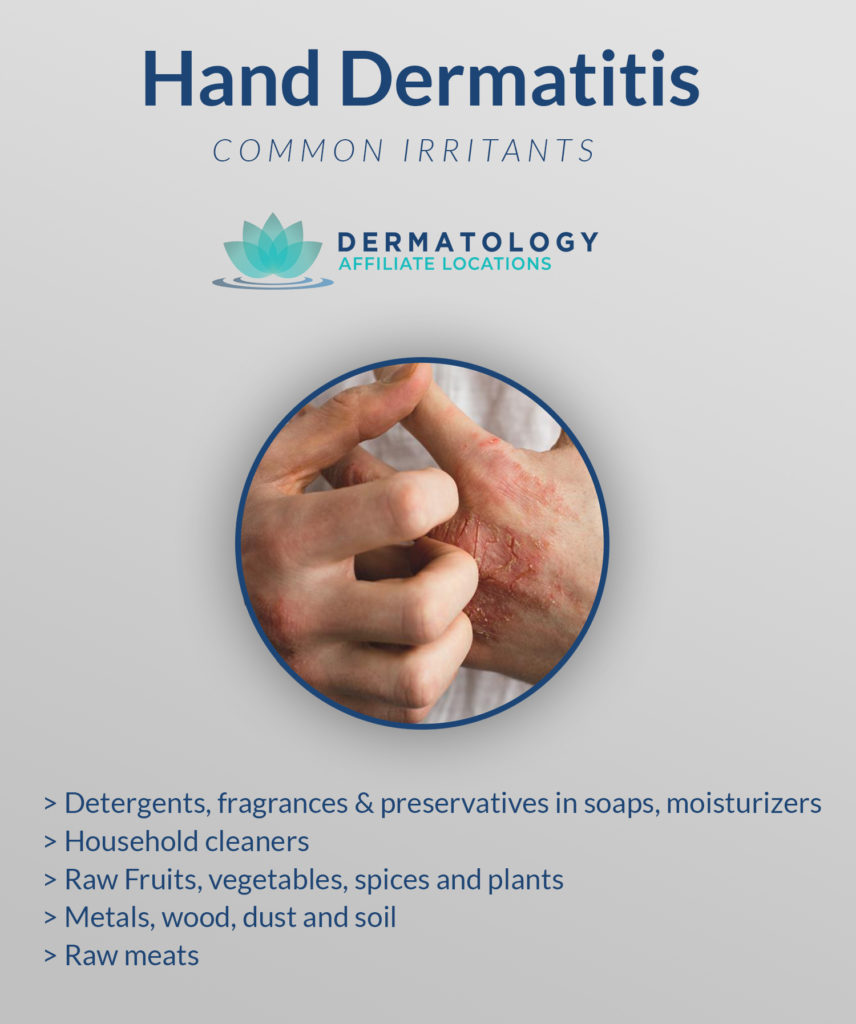Hand Dermatitis: Everything You Should Know for Prevention & More
With everyone turning to hand washing to avoid this tragedy that is the COVID-19 pandemic, there’s an increase in related hand dermatitis. And while keeping sanitized is more important now than ever, it doesn’t need to be at the expense of the everyday function of your hands.
Learning more about hand dermatitis can help you both stay clean and also prevent irritation in the process.
A word about washing your hands…
Wash your hands.
Seriously, it’s important. With the COVID-19 coronavirus we should all be doing everything we can to keep ourselves and others safe. Continue to do appropriate social distancing, do not touch your face and clean your hands frequently.
The Centers for Disease Control recommends washing your hands with soap and running water for 20 seconds and thoroughly drying them off afterward with a hand dryer or clean towel. If you have access to alcohol-based hand sanitizers with greater than 60% ethanol or 70% isopropanol, that can also be effective, according to the CDC. You can read all of their handwashing recommendations here on the CDC website.
What is hand dermatitis?
Hand dermatitis is when your skin is red, inflamed, swollen, and even has a dried or scaly appearance, making it look flaky. Oftentimes, the skin can crack, making it quite painful to go about your everyday life.
What does hand dermatitis look like?
The presentation of hand dermatitis does depend on its severity. There are also different forms, including the kind that’s chronic as well as situational, often caused by overwashing with harsh chemicals.
Here’s an image of what the different levels of hand dermatitis look like.

What causes hand dermatitis?
You’re washing your hands, but now they’re red and dry. What do you do?
It is very possible to get dryness and irritation on the hands over time from hand washing. This is because the soaps that we use can be a common irritant or even allergen. Overuse of soap and water can prevent the restoration of the normal skin barrier and make the skin susceptible to irritants.
Steps to prevent this:
- Use unscented or fragrance-free soaps to avoid additional irritants.
- Use lukewarm water, not hot water.
- Dry your hands gently without rubbing too much.
- After your hands are dry, use a moisturizer to help restore the normal skin barrier. Try to use fragrance-free moisturizer as well.
What else can you do to avoid hand dermatitis?
If you are following the CDC recommendations for handwashing closely, you are probably washing your hands very frequently throughout the day. To cut down on the “wet-to-dry” cycles of handwashing that can cause irritation, substitute hand sanitizer when possible.
Hand sanitizer is a good option when the hands are not visibly dirty or greasy and can minimize overexposure to soap.
Apply hand sanitizer to one palm, rub your hands together to apply to all surfaces of your hands and continue until hands feel dry. This should take about 20 seconds.
I’ve had hand dermatitis symptoms for a long time, what do I do?
What if this isn’t something new for you? For people that have been suffering with hand dermatitis either consistently or “on and off” for months or years, it likely isn’t related to hand washing alone.
There are many potential causes and types of hand dermatitis. These can range from irritant or allergic contact dermatitis to eczema to psoriasis and even fungal infections. If you have a history of eczema or psoriasis, your hand dermatitis can often be related.
Chronic dermatitis is often from “wear and tear” from repeat exposure to irritants and you may see redness, scaling, thickening of the skin and even fissures.
Fissures are cracks in the skin that can cause pain. To help with this pain, you can use a dab of super glue to the cracks. Do not use this if you are bleeding from any of the fissures.
What can we do about your chronic hand dermatitis?
The first step can be done by you at home. Start by trying to avoid irritants and allergens. You can do this by strict avoidance or wearing gloves when you will come in contact with them.
Common irritants and allergens:
- Detergents, fragrances & preservatives in soaps, moisturizers
- Household cleaners
- Raw Fruits, vegetables, spices and plants
- Metals, wood, dust and soil
- Raw meats
Then come in for an evaluation.

How can we determine what type of hand dermatitis you have and what to do for it?
We will go through a thorough history with you. Whether you have noticed any patterns with your chronic dermatitis, including potential irritants you come in contact with on a regular basis, environmental factors, personal and family history of other skin conditions and what treatments you have done in the past.
Along with the history we will do a physical examination that will also include the rest of the skin to look for any other clues as to what the cause could be.
Then we will determine if any additional tests need to be done, such as patch testing for contact allergies. Once we have an idea of the severity and why it is occurring we can come up with a treatment plan that could include avoidance of allergens, topical treatments, or in-office light treatments.
If you’re seeking treatment or need to visit a dermatologist to be sure of your condition, book an appointment with us today. We are open in the office and through Tele-Derm.
About Patrick Rice, PA-C

Patrick grew up on the northwest side of Chicago. In 2009, he graduated with a degree in Industrial Engineering and Management Sciences from Northwestern University’s McCormick School of Engineering. He then worked for a healthcare consulting company for two years before beginning his path to become a Physician Assistant.
Patrick Rice completed his Physician Assistant training in 2016 with a Master’s Degree in Medical Sciences at the College of Health Sciences at Midwestern University in Glendale, Arizona.
He then joined GoldinSkin Dermatology in October 2016.
A Physician Assistant is a nationally certified and state licensed medical professional who practices medicine under the supervision of a physician. Patrick sees patients, prescribes medications and performs procedures as part of the GoldinSkin Dermatology team. Many patients remember Patrick because he was Dr. Goldin’s medical scribe for two years while he completed his prerequisite courses for Physician Assistant’s school.
He is a member of the American Association of Physician Assistants and the Society of Dermatology Physician Assistants.

